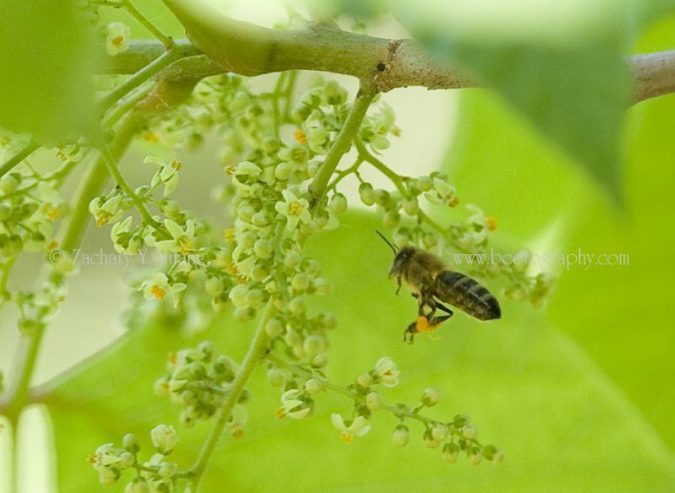| Family | Anacardiaceae |
| Genus | Toxicodendron |
| Species | T. radicans |
| ZBAS | 3 |
There are actually several species of Toxicodendron in the US, the one I shot photos of is the most common one, poison ivy, or Eastern poison ivy, T. radicans. Two others are Western poison ivy (T. rydbergii) and Western poison oak (T. diversilobum). The names are interesting because poison oak is not an oak (Quercus, family Fagaceae), neither is poison ivy an ivy (Hedera, family Araliaceae). All three plants are nasty in that they cause strong irritations (blisters, itches) that can last 5-10 days. But the plants do not contain a poison; they contain a potent allergen, urushiol. So, yes, it is a native plant and can be good to insects (see below), but I do not recommend planting it. Other good bee plants, such as staghorn sumac, and Chinese sumac, are also in the same family.
Due to the COVID-19 virus, nearly all visitors in my lab were not allowed to work due to the one person per vehicle rule. So since May 28 I have been keeping bees almost daily, all by myself. This included checking for swarming cells, adding supers, looking for the queen and marking her and clipping her. So it was a rare day yesterday and today that I finally took a break, having finished all 40 colonies.
Two nights ago I took my wife for a walk and remembered to look at the poison ivy on the way. It was blooming! So yesterday around 3 pm I went to another location (about 100 yards north of the bridge over Red Cedar River, on Dobie, in Okemos MI), because I remembered it had a bigger “tree” of poison ivy and of course, it would be closer to my bees (they are only less than a mile away by straight distance!).
It was about 20 degrees C so not hot at all and I stood, quietly under the big “tree” of poison ivy, which actually was surrounding a large oak tree, waiting for my “babees” to come. People jogging and biking must be thinking I am crazy!
I first noticed at least 3 types of solitary bees, very tiny (about 1/5 of the size of honey bees) foraging for pollen and perhaps also nectar (I tried to be as close as possible without the leaves touching my face, to see if bees were drinking nectar) . All 3 are halictids (family Halictidae, parallel to our honey bee’s family Apidae). Then a bumble bee came, and I shot her a few good pics. I brought my old Nikon D700 camera with a 180 mm Tamron macro lens so it did better than my 90 mm macro on the Sony A7ii. After what seemed a long while (perhaps only 10 min?) I thought I could retreat. After all, I could tell beekeepers that yes, I think honey bees will forage on poison ivy because I saw (and have photos of!) bumbe bees foraging on poison ivy flowers. Good enough?
OK, I was hesitant to leave, then I saw one honey bee finally! At least 2 meters away but my long lens could reach her. She was a totally dark bee (perhaps a Carniolan). After some shots I waited again, and saw a yellow Italian bee foraging also! My total time under that huge poison ivy tree was 32 min. I went there again today, only 17 C and a bit cool, but again saw at least 2 bees, but more windy today and I was hoping for a really large honey bee photo, but I did not get it. Googling for images, I did not see any other photos of honey bees foraging on poison ivy or oak. We are also lucky that both the honey (one guy in Oregon sells poison oak honey!) and pollen are not toxic to us. But disclaimer: these were not based on scientific studies, but on beekeeper reports.
Ok, here comes the proof.
1. I was working in my own garden about 8 days ago, wore gloves and being careful when pulling the poison ivy out. But one weed was so long, some leaves touched my arm…it started blister 3 days later. I should have taken the photos 2 days earlier (if I knew I had some honey bees foraging on poison ivy coming!). The blisters went away when I took this photo, June 12, the same day of the bee photos.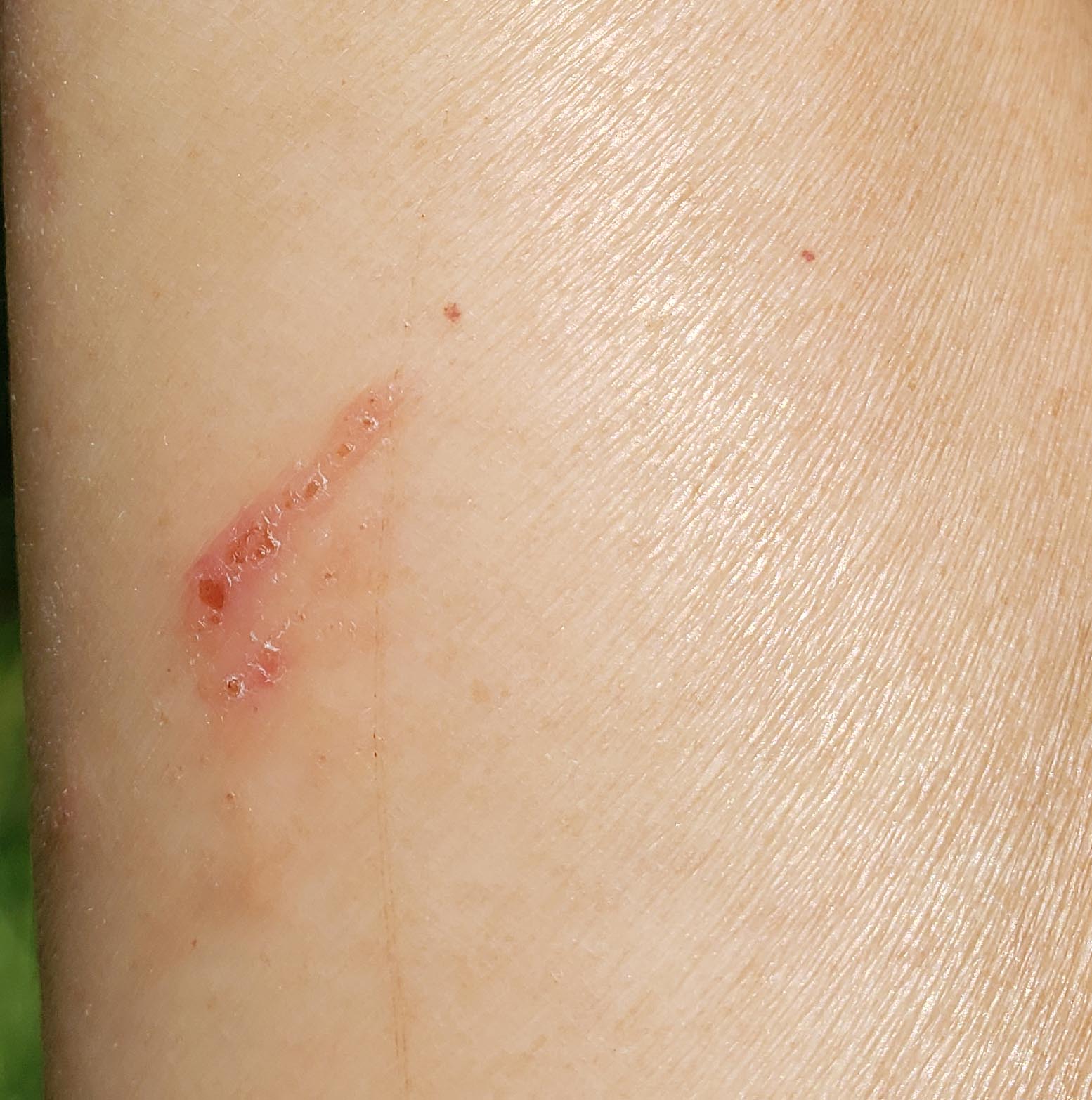
2. This shows you how big the “tree” is! At least 10 years old, supported by a large oak tree.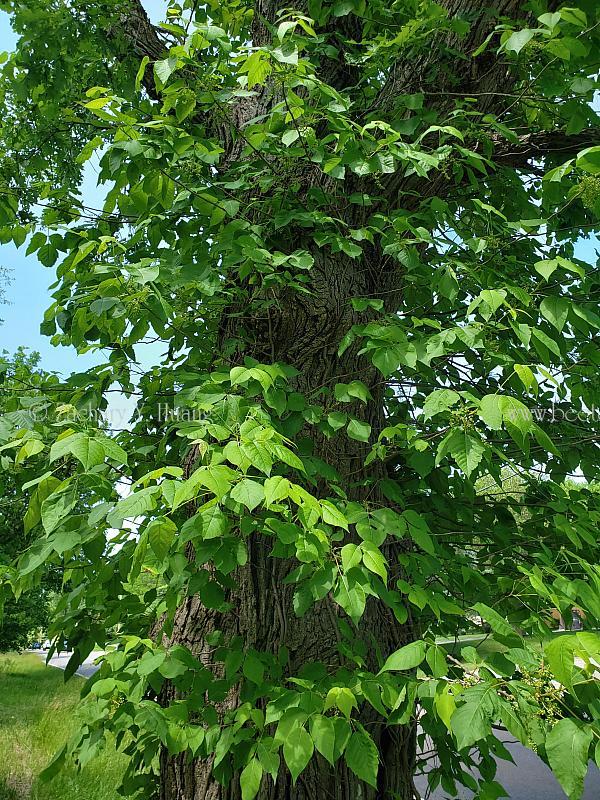
3. Close up of flowers of poison ivy.
4. Beautiful bee also! but wont make honey for me. I suspect it is a halictid.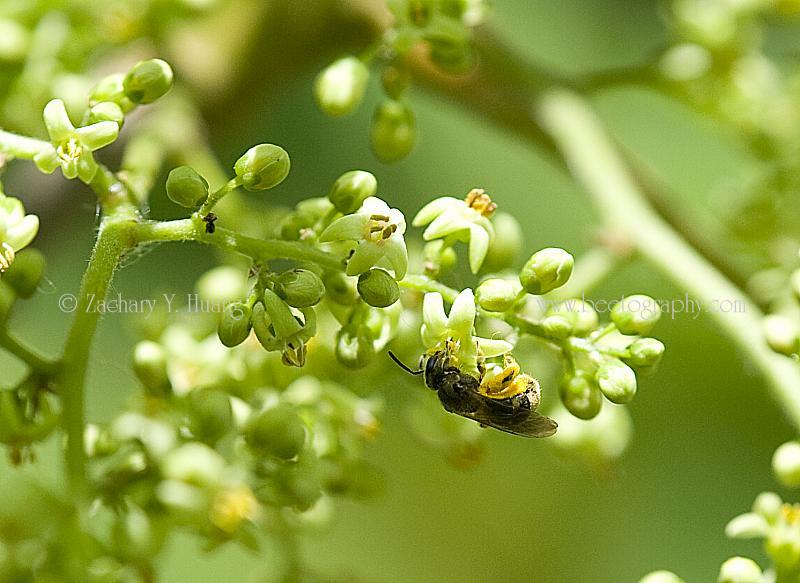
5. Another type of halictid.
6. A very common one with a green metalic color, also a halictid.
7. Finally a bumble bee! taxonomically closer to a honey bee (same family)
8. Now you see the dark honey bee
9. Still her
10. Now you can see her pollen.
11. You can see this bee is yellow, clearly a different one from the last.
12. Today I went there again and saw another two bees (not sure if the same two or not), so that is why I gave it a ZBAS of 3. I was trying to get a closer shot. Slightly closer today.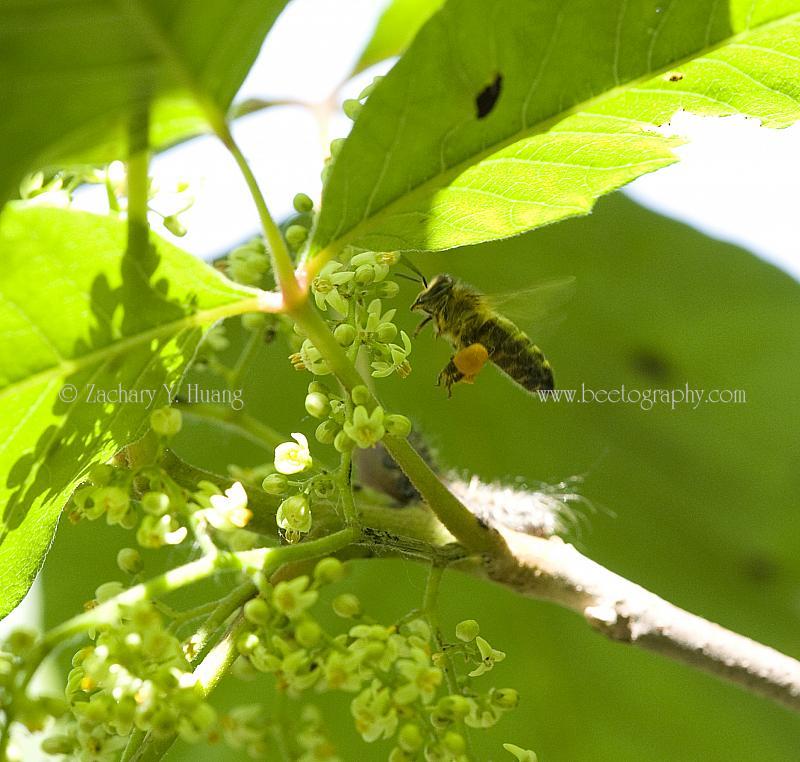
This is one flower that required a lot time to get pics of, but not bad as catalpa. Ragweed also took me many years to find a bee on it. My next two will be tulip poplar (blooming now!) and tupelo (just missed).
Thank you!
ZBAS = Zach’s Bee Attraction Score.

